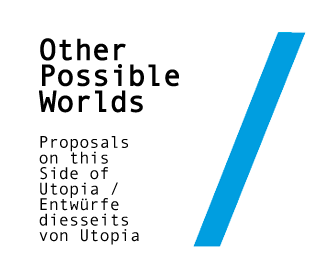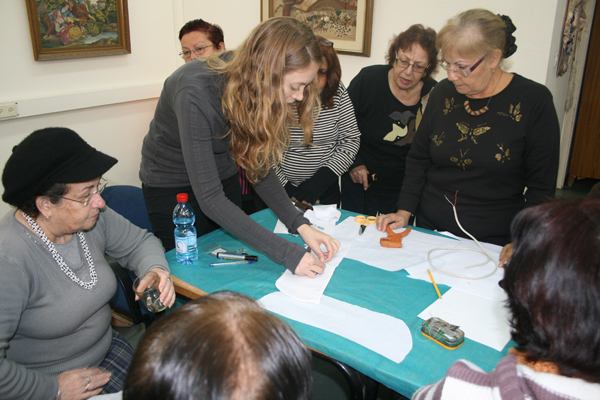israeli_web
The Israeli Center for Digital Art – The Jessy Cohen Project
Text by Eyal Danon
Background
Back in 2009, the city of Holon invited the ‚Center for Digital Art‘ to operate in the Jessy Cohen neighborhood. The immediate context for this invitation was the entrance of around 120 families of Ethiopian origin to the neighborhood; a process that had begun two years earlier and over which the city had no control. This process reflects the problematic policies of Israel regarding the issue of Jewish immigration, (“aliya” in Hebrew means “coming up” to Israel). We saw this invitation as an opportunity to explore and test some ideas and theories that we had regarding the roles and responsibilities of art vis-à-vis its local context—be it a neighborhood, the city, or the general society.
We decided to dedicate the first months to research that included talks with various residents and people working in the neighborhood. These talks were focused on the history of the neighborhood, its past problems, its tradition of social activism, the influences of waves of immigration, and the connection of all these factors to its current condition. From the very beginning we understood that we face a huge gap regarding the expectations of the various partners and participants in this project. When the city invited us it was clear that we were expected to create a change. The definition of this change remained unclear, and so did the criteria for its future evaluation. The city made it clear that it was worried that the large numbers of new immigrants from Ethiopia can become a future problem, as this population suffers from a range of socioeconomic problems. It fears that this immigration can create a ghetto and bring back the “old” problems of the past in Jessy Cohen. So we were invited to be part of an effort that also included the welfare department, the community center, the schools in the neighborhood, and other activists. So we were expected to provide solutions, as the other stakeholders. However, what are our tools? And again, what are the criteria for evaluation?
We also learned from the different meetings we had with residents and others, that there were very clear expectations from us and quite a clear understanding of what we should do as artists in the neighborhood: we were expected to change the image of Jessy Cohen—to bring aesthetic first aid and to beautify it.
Through this process of learning we also started to establish our alliances and partnerships within the neighborhood. Although it was clear from the beginning that we will not be able to work alone in Jessy Cohen, it was not clear, until these meetings, who would be our partners. The local community center—a very active and important institution in the neighborhood—became our main partner and link of communication with other individuals and residents involved. From the welfare department we learned about the specific needs and difficulties of the population in Jessy Cohen, and specifically of the new immigrants from Ethiopia. We met with the directors of the schools in the neighborhood and with different activists and teachers. We also visited the city archive and learned that the neighborhood has a long history of social struggles and activism. These people became our partners not only for a collection of knowledge and information but also for processes of decision-making. The coalition we formed with them allowed us to create a unique structure for the project: a combination of artists and non-artists that shared the processes of research and the planning and implementation of various activities. In order to work in Jessy Cohen we gave up our role as sole curators.
Following these stages of research, a working model was established based on the assumption that the successful intervention in the neighborhood depended mainly on these factors:
1. Working with many entities already operating in the neighborhood, (community center, municipal welfare, schools, volunteers and community activists, youth instructors, etc.).
2. Long-term projects focussing on creating change and expansion processes.
3. Projects in which knowledge is gained and exchanged.
4. Projects that provide support to each other, through their implementation.
5. Projects that prioritize the use of technology.
This resulting plan—although grounded in several starting assumptions—was structured so that we could develop in response to ongoing feedback provided by a forum of local residents, activists, municipality officials and curators, who convened twice a month to coordinate all activities and to advise the artists on the specific needs articulated by the stakeholders involved.
We also made it clear that the target audiences were not only the residents of the neighborhood, but the art and culture community as well. We hoped to become a learning point for new modes of actions of art within the community—through processes of implementation, learning, exchange and research.
The project is implemented through various artistic endeavors, a continued presence and the grassroots activities of artists in the neighborhood; also through workshops and enrichment activities that take place within the neighborhood’s private and public spaces. We hope that the different activities will create ever-growing circles of involved individuals, residents and artists, who will become “agents” for the project.
The project also represents an invitation to the artistic community to act within a specific social context and to produce models and tools for neighborhood-based art practice. These models should explore and implement art projects that involve as many artists and local residents as possible, privilege group (as opposed to individual) activity, and lay the groundwork for long-term and continuous change. At the same time, the project serves as a test case for collaboration among various municipal systems responsible for the neighborhood, and for the integration of an art center in a framework of solutions Holon can offer the neighborhood’s residents.
This strategy is designed to create an equal partnership among the local residents, artists and the municipality as the best way of producing long-term and ongoing projects. We hope that this sense of ownership by neighborhood residents and other municipal stakeholders might serve as the needed antidote to the sense of alienation often produced in residents by external initiatives.
Implementation
Our next step was to publish an open call for artists, designers and architects to propose—according to our principles listed above—projects and actions to be implemented in Jessy Cohen. This resulted in around thirty proposals, among them proposals submitted by teachers from the local elementary school and from a group of social workers in the welfare department. We selected seven projects for implementation and these are currently in process.
The Jessy Cohen population may be roughly divided into Israeli natives, immigrants from Ethiopia and the former Soviet Union, and the more recent Falash Mura immigrants, (Ethiopian Jews who have been forced to convert to Christianity, and then, in order to be able to immigrate to Israel, have been forced to reconvert to Judaism). Although this categorization does not do complete justice to the neighborhood’s cultural variety, it will be used here as a common basis for reference as it is has been adopted by our partners.
Our selected projects and activities try to offer frameworks in which these groups can meet and work together. However, in some cases we also provide activities directly aimed at the needs of a specific group. Based on our principles and assumptions, we decide to operate through three main interactive and mutually supportive channels:
1. ‚An office/art space in the neighborhood‘ offering an art and culture program that includes master classes, screenings of movies and video art, and workshops and music performances. This venue is the project’s core—facilitating the transfer of cultural knowledge from the artists to the local residents and back.
2. ‚Technology and art workshops‘ are designed to introduce locals to the world of technology by providing them with various programming, web-surfing, photography, editing and electronic tools in a social context.
3. ‚Artwork in the neighborhood‘ is a series of projects by Israeli and international artists that take place in the neighborhood’s private and public spaces—either in response to public requests for proposals or through direct commissions. The idea is that the artists will stay in the neighborhood for extended periods—throughout their projects’ planning and execution stages.
Temporary conclusions
After almost a year of work in the neighborhood, which included six months of research and preparations, and the beginning of implementation of the various artists’ projects, we can begin to evaluate and understand our work. We learned that no matter how integrated we wanted to be, through our collaborations with the different partners, we are still considered outsiders and we need to spend an extremely large portion of our time in talks with residents just trying to get them to leave their houses and join the activities. In this respect the best PR was our own activities and the “friend tells a friend” approach.
We knew that we couldn’t replace the other partners and do the work of a teacher, a community worker or a social worker. We must however work in coalition with them. It is not clear whether it is just because we are in the beginning stages of a process of defining the tools and working models of art and artists within a social and communal contexts, or because art is simply incapable of working alone in these circumstances, but while all the other professionals involved could continue doing their jobs and duties without us, we probably couldn’t do a meaningful job without them. It is true though, that all of us benefit from this collaboration.
Finally, the objective of all this is not to encourage people to move into the neighborhood, but it is rather to empower its current residents and turn their living environment into a source of sociocultural support.



